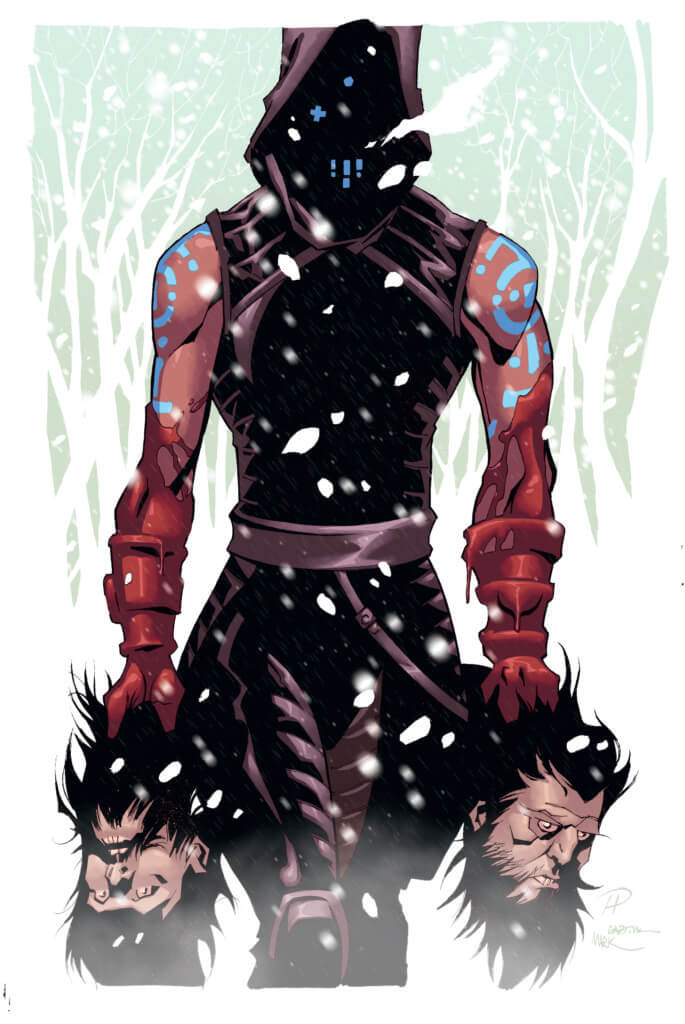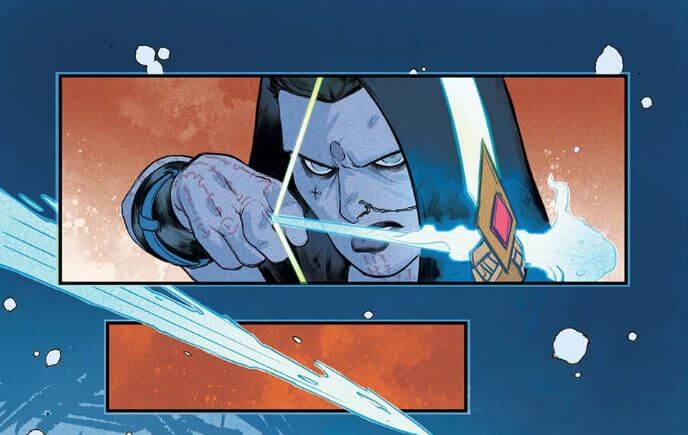Nothing captures my attention more in a comic than when creators introduce a strong, competent woman in the first few pages of new series, ass first. Obviously that’s a lie. Well, not exactly. It does capture my attention but for the wrong reasons. It’s a good butt. It’s a butt that the artists drew with clothing, well muscled, attached to a full person and does not take up the entire the first page, butt.
Artemis and the Assassin #1
Creators: Stephanie Phillips (writer); Meghan Hetrick & Francesca Fantini (artists); Lauren Affe (Colorist); Troy Peteri (Letterer); Phil Hester with Mark Englert (Cover); and Dave Johnson (1:15 Incentive Cover)
Aftershock Comics
March 18, 2020

With a creative team comprised mostly of women with Stephanie Philips writing, Meghan Hetrick and Francesca Fanti as artists, Lauren Affe as colorist and Troy Peteri as letterer, I’m choosing to let that slide. Artemis and the Assassin #1 sets up the story of an inter-temporal tête-à-tête reminiscent of Image’s We(l)come Back. Two women, trying to kill each other, displaced by time.
I love that the first issue packs in action sequences that demonstrate the competence of both women. Both Maya, the future assassin, and Virginia, the WWII resistance sniper, are women who know how to do their jobs. Hetrick and Fanti draw Maya in powerful poses as she cuts down anyone standing in her way. Similarly, Virginia is calm and collected when she’s sniping a soldier or walking into a bar. Unfortunately, the story feels too similar to other comics I’ve already read.
Specifically, this issue reminds me of Crowded and We(l)come Back. However, unlike those books, it does not center people of color. There’s a panel on page 12 that reminds me so much of Vita from Crowded, in face shape and emotion. There’s the sense of “Oh Shit this is happening” but simultaneously the feeling that Virginia will come out okay. Unfortunately, where Crowded and We(l)come Back present a future filled with diverse shapes, sizes, and colors, the glimpse of the future we see in Artemis and the Assassin is far from that. We get a white woman assassin talking with a man, who looks like he leaped into the future from The Great Gatsby.
Specifically in relation to Maya, based on the incomplete colors for the first issue, I am concerned about the Euro/Euro-descent-centrism of the cast and the association with power and light skin. Virginia and Maya are both drawn with Caucasian features. Furthermore, while one of the incentive covers for the series has Maya with a darker complexion, the initial internal colors have her extremely pale.

While this is a possibility for what someone in the future might look like, I have a hard time believing it knowing trends in population demographics. Furthermore, it projects a future that perpetuates light-skin-as-power and euro-ethnocentrism. Instead of projecting existing diversity into the future, the choice of color and features by the artists and colorist project the uniqueness of caucasity into the future. In combination with a focus by the writer on the European front during WWII, even though significant losses were experienced in Asia and elsewhere in the world, and the assassination of bad guys, like Rasputin, who are primarily important in Europe, the first issue feels whelming.
Lastly, the end of the first issue sets up the scuffle between our two women protagonists. Unfortunately, Maya is there to kill Virginia, a resistance sniper whose goal is to take down the Nazis. As I put the comic down I paused, realizing that the organization that Maya works for wants the Nazis to win and that’s just uncomfortable. In an interview with the Hollywood Reporter, Phillips suggested that this not the the way the story goes. However, it is still an awkward cliffhanger to end on for the first issue. A future Nazi supporter versus a resistance fighter with a disability.
Artemis and the Assassin #1 leaves me at a loss. It could go in cool directions, exploring why a future organization still wants to perpetuate Nazi ideology. There’s an intriguing inter-temporal concept. What does the world look like without the influence of people like Rasputin or Attila the Hun? It’s a majority woman creative team. Yet, I see a woman’s butt before I see her face. There’s a lot of guesswork regarding where Artemis and the Assassin could go as a series, giving me pause about reading more.

